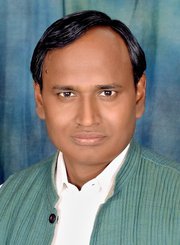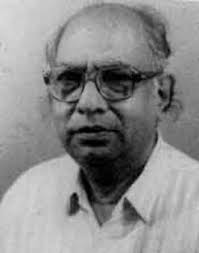by K M Sherrif
Dalit poetry as a distinctive mode arrived in Malayalam literature at the end of the Eighties of the last century. Not that poetry with a distinct Dalit sensibility by Dalit writers was absent in Malayalam literature before that. Pandit Karuppan’s Jathikkummi (Caste Songs) were written in 1904. Karuppan, a Dalit from a fishing community called Dheevaras from Cheranalloor, a village in Ernakulam district, went on to become one of the early Dalit poets in the language. Poykayil Yohannan (Apachen) or Kumaraguru who was an activist and a writer wrote several hymns which proclaimed the ideology of his Prathyaksha Raksha Daiva Sabha (PRDS), a dissenting sect which had split from the Mar Thoma Church. His poems have been compiled in a volume titled Ratnamanikal. The political energy released by early Dalit poet-activists like Karuppan and Poykayil Kumaran seems to have dissipated before the first half of the Twentieth Century ended. What is remarkable about the poetry of these early Dalit poets is the political vigour that galvanized it. Readers who are not cognizant with the history of Malayalam literature in the first half of the Twentieth Century has to be informed that these poets operated at least two decades before Changampuzha wrote Vazhakkula(1936) which was later hailed by the literary establishment as the first poem to protest against the oppression of the Dalit peasants by Savarna landlords. It would take another decade for the Left-leaning Progressive Literary Movement to gain a foothold in Malayalam literature.
Dalit poetry went into an eclipse with the ascendancy of the Progressive Literary Movement and re-emerged only in the Eighties of the last century. The reasons are obvious. Caste and gender as determining categories were pushed under the carpet by the Progressive Literary Movement which considered class as the sole basis for discerning social inequality and marginalization. Of course, there was, and still is, a lot of overlap between caste and class. Dalits and Adivasis are the poorest communities in Kerala. But what is often not realized is that the overwhelming majority of Dalits and Adivsis are doubly oppressed due to their class and caste positions. It was also not realized that upward mobility of castes is a slow and excruciating process. The history of postcolonial India shows that the caste hierarchy has changed little in most parts of India and that even in regions where social changes have created the illusion of its disappearance – Kerala is the most obvious case in point – it continues to exist in disguised forms, becoming much more dangerous through such disguises. Mao remarked that it might take a thousand years for a classless society to be established. Given the fact that caste has demonstrated its tenacity through three millenniums, surviving even the massive wave of Budhism that swept the length and breadth of the country three centuries before the Common Era, one has to face up to the frightening possibility of having to live with it for another ten thousand years.
Caste and gender have emerged from hiding as categories to be reckoned with in postmodern and postcolonial discourses. Although formulations about the conflict between classical Marxist positions and postmodern/postcolonial theoretical positions from both sides of the dividing line are still being subjected to skeptical analysis, it is obvious that Dalit studies and gender studies are today witnessing an unprecedented surge of activity, drawing its strength mainly from the former. Although the marginalization of Dalit and feminist discourses in India, especially in Kerala by classical Marxist intelligentsia does justify some of the latter’s anti-Marxist positions, it is far from clear whether an outright theoretical counterpoising of Marxist and Dalit/feminist discourses can be sustained. What are amply clear are the ways in which Left political movements in the country have marginalized both dalits and women in both their theory and praxis. This marginalization continues to haunt Dalit writers and poets. It provokes the kind of bitter sarcasm against communist platitudes one finds over andover again in the poetry of Raghavan Atholi, the first poet to emerge in the Renaissance of Dalit poetry in Malayalam in the Eighties of the last century.
Identity politics has played a major role in the vicissitudes of Dalit writing in many literatures in India. Identity, for instance, has been recurring theme for the major Dalit poets in Gujarati. The question of identity is more often than not addressed from the point of social marginalization. But it can assume a more fundamental form when the Dalits are perceived as a sub-cultural group with its own worldview and lifestyle. Dalit writers and intellectuals are divided on this issue. But most Dalit writers and activists today stridently oppose the cultural stereotyping of Dalits. They rightly point out that such stereotyping would perpetuate the marginalization of Dalits. Narayan, the first Adivasi writer in Malayalam has emphatically stated that he would prefer Adivasis to wear shirts-and pants and Saris-and-blouses instead of their traditional dresses. It is also true that the apprehension expressed by Dalit intellectuals recently about the tendency of Savarna and ‘savarnised’ writers and critics in Kerala to insist that Dalit writers should, for the sake of authenticity, write in their own dialects, or at least in ‘simple Malayalam’,rather than in a highly Sanskritised idiom is also well-founded.
Dalit poets in many Indian literatures have certainly adopted a stridently subversive idiom. It often verges on the scatological or the pornographic. This is particularly noticeable in Tamil Dalit poetry. But one comes across instances in other languages too: Narsingh Ujamba in Gujarati, Raghavan Atholi in Malayalam. This subversive idiom is a feature of all protest poetry. One finds it abundantly in American Beat poets like Ginsberg or Black poets like Amiri Baraka. Ginsberg advised the American establishment to “fuck yourself with your atom bomb” (“America”). Even if it is not desirable to adopt a particularly ‘Dalit language’, it is certainly one of the tasks of Dalit writing to subvert the Brahminic discourse as it is manifest in conventional poetic idiom. Subversion in Dalit poetry occurs at other levels too. In Gujarati Dalit writing, for instance, there is the invocation of a subaltern mythology as a foil to Classical Hindu mythology which has served as the bulwark of caste-hegemony for centuries, effectively disfiguring, assimilating or marginalizing sub-cultures outside the pale of the ‘mainstream’. There is also a quest for a ‘golden age’ when ‘all men lived as equals’ and Dalit ideology and culture were the mainstream. This tendency is less visible in Tamil or Malayalam Dalit writing. Although the combat value of the construction of such a mythology in resisting the orchestrated glorification of ‘mainstream culture’ by Hindu fundamentalists, the invocation of the past is essentially regressive. Letting the dead past bury its dead would be a more effective strategy.
Dalit poetry has also attempted a radical transformation of poetic forms. In Gujarati poets like Bipin Gohel and Kisan Sosa have liberated the ghazal from its gilded,pseudo-romantic confines, and revitalized it to express the agony, the ecstasy, the hopes and frustrations of a poetic sensibility tuned in to the struggles of Dalits and other marginalized sections of society. In Malayalam, this transformation is visible in the rejection of the craft and clichés of both modernism and its ‘red tail’ (the expression used by Narendra Prasad, critic and theatre activist), political modernism.
The poems in this collection present a cross-section of Dalit poetry in Malayalam.The poems of Poykayil Appachen and K K S Das give a diachronic representation to thecollection. Appachen’s poems express the agony, longings and hopes of the exile and themarginalized, much like the book of psalms in the Bible. Das’s poem begins as a lamenton the predicament of the Dalits and ends as a resolve to change it. Kallada Sasi’s poem is an ode to the great messiah of Malayali Dalits, Ayyankali, whom traditional historiography has, to quote the Gujarati Dalit poet Bipin Gohel, tried to ‘stamp out from the walls of time.’ Equally evocative is G Sasi’s homage to Ambedkar “Ambavade”. S Joseph’s poems are noted for the detailed portraits of Dalit life he draws. It is remarkable, however, that the disintegration of the family in ‘When We Part’ has none of the idle wistfulness of romantic lyrics, of which there have been hundreds in Malayalam. Renukumar’s unique imagery and idiom comes through, even in translation, in “Closed.” The agony of the dispossessed comes through a few cryptic lines in Sajin P J’s “What I Have.” Kaviyur Murali’s “Screw-pine” conducts a postmortem of the history of the Dalits in post-decolonized India using the screw-pine as a metaphor.
Binu Pallippad’s “Civilization of Love (and Death)” is an unusual poem in which scenes of oppression and torture unfold like in a cinematic sequence. Kalesh S in “When the Moon Comes Out” compresses the moonshine of hope into a little child’s eyes. Raghavan Atholi’s “Where Hunger is Sold” throws stones at the glass houses of opulence and arrogance from which rises the cacophony of the bidding for the lives of the wretched. In “Silence”, Johnson Cheeranjira breaks out with a single shout of assertion and relapses into silence again. In his two ‘university poems’, “Children Writing the Exam” and ‘University: A Lesson” M B Manoj expresses the haunting realization of aDalit intellectual that he cannot really belong to an academic culture in which he is powerless. Manoj’s third poem in the collection “Children of the Woods conversing with Christ” is rather unusual: It is perhaps one among just a handful of texts in Malayalam literature which articulate the Christian Dalit’s sense of alienation. A K Vasu’s poem “Rocks, Rivers, Machines” in a brilliant flash of imagination draws a comparison between bonded Dalits and machines, Sivadas Purameri’s “Water Lessons” is remarkable for its economy of diction and its politicization of images. Bhasi Arankath’s powerful statement in “Subaltern talking to a Bull” is a shocking reminder that Dalits in many parts of the country are worse off than animals and that, in the poet’s own words, ‘only a tale’ separates them from the latter. The street palmist in Sunny Kapikkad’s “Street Palmist” can only discern the horrifying images that come alive at the end of each line on the palm. K K Sivadas’s “Vegetative Life” is certainly a green poem, but not the conventional environmentalist daydream. It embodies a Dalit vision of ever-renewing, sustainable life.
This selection of Malayalam Dalit poetry in English translation is the first of its kind. The editor, the translator, the publishers and the Dalit collective which actively worked for its publication deserve acclamation. I am honoured in being chosen to introduce it to readers.
Thalassery
August 2008.









